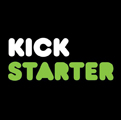Have an album you’re ready to record and release? A film you want to produce and screen at festivals? How are you going to pay for it?
Talking Points Memo (TPM) reported this week that Kickstarter, the popular crowdsourcing platform, will likely distribute more funds to creators this year than the National Endowment for the Arts (NEA). As amazing as that sounds, and in some ways is, these two organizations are “apples and oranges,” with different missions and modes of operation.
 When we think of Kickstarter, we envision indie bands and filmmakers subverting traditional channels to fund their work. Many of us have contributed to projects undertaken by friends and acquaintances, and launched our own campaigns. Kickstarter has demonstrated not only that fans will actively support artists financially, but that many of them are interested in participating in the creative process. Years ago, the traditional music fan (R.I.P.) would buy a hotly anticipated album the day it was released, take it home and listen to it, and tell a friend or two about it the next day. Today’s fan funds a Kickstarter campaign and follows the creation of the album from start to finish, tracking its progress with dozens or hundreds of like-minded supporters.
When we think of Kickstarter, we envision indie bands and filmmakers subverting traditional channels to fund their work. Many of us have contributed to projects undertaken by friends and acquaintances, and launched our own campaigns. Kickstarter has demonstrated not only that fans will actively support artists financially, but that many of them are interested in participating in the creative process. Years ago, the traditional music fan (R.I.P.) would buy a hotly anticipated album the day it was released, take it home and listen to it, and tell a friend or two about it the next day. Today’s fan funds a Kickstarter campaign and follows the creation of the album from start to finish, tracking its progress with dozens or hundreds of like-minded supporters.
Kickstarter harnesses the power of the crowd to support the artist — while helping to enrich the individual.
 When we think of the NEA, we imagine competitive arts grants and partisan agendas and the culture wars. Congress created the NEA in 1965 to formalize a national commitment to the arts that was not about personal taste or allegiance as much as it was about the value and place of the arts in American culture. The NEA helps ensure, for instance, that community theater can survive in small-town America regardless of the strength of ticket sales (or the pocket depth of local matrons). It ensures that a variety of artists are funded regardless of commercial prospects or popularity.
When we think of the NEA, we imagine competitive arts grants and partisan agendas and the culture wars. Congress created the NEA in 1965 to formalize a national commitment to the arts that was not about personal taste or allegiance as much as it was about the value and place of the arts in American culture. The NEA helps ensure, for instance, that community theater can survive in small-town America regardless of the strength of ticket sales (or the pocket depth of local matrons). It ensures that a variety of artists are funded regardless of commercial prospects or popularity.
The NEA summons the resources of government to support the artist — while helping to strengthen the cultural fabric.
How do these two distinct funding paths relate to one another? You could think of Kickstarter and the NEA in the way you do providers of health care. Kickstarter is like privately financed managed care in that it creates efficiencies to improve the process. The NEA resembles publicly financed universal care in that it equalizes access to ensure no one is left out. These are separate pieces of the puzzle, each essential, covering the bases of individual and collective need.
When Kickstarter co-founder Yancey Strickler spoke with TPM, he stood up, to the surprise of some, for the NEA. After confirming Kickstarter was eclipsing the NEA in distributions, Strickler said, “We view that number and our relationship to it in both a good and bad way… Maybe it shouldn’t be that way. Maybe there’s a reason for the state to strongly support the arts.”
Kickstarter focuses on art, comics, dance, design, fashion, film, food, games, music, photography, publishing, technology, and theater. The NEA supports artist communities, arts education, dance, design, folk & traditional arts, literature, local arts agencies, media arts, museums, music, opera, theater, and visual arts.
Which funding path is right for you? Visit the involvement guidelines for Kickstarter and for the NEA. Or start saving your pennies. Or check the limit on that VISA card you said you were going to cut into those tiny, artistic pieces.
—
Mark Doyon is founder and creative director of Wampus Multimedia, a music label, ebook publisher, and an identity & branding group in the Washington, D.C. area.